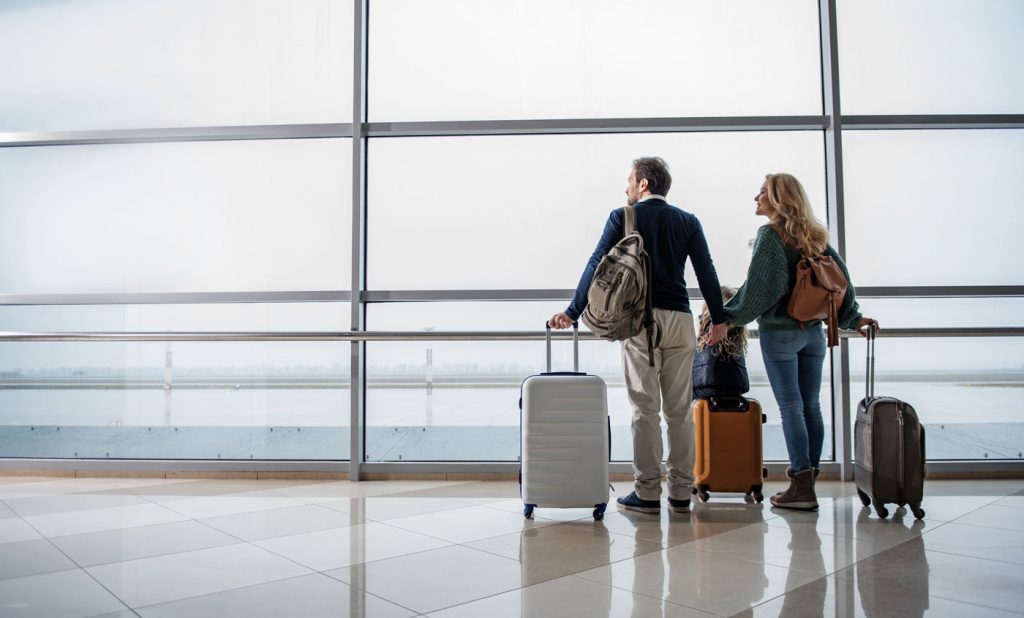If you follow these tips, you won’t lose your suitcase
When you are traveling, a damaged or lost suitcase can make the trip memorable for all the wrong reasons.

When you are traveling, a damaged or lost suitcase can make the trip memorable for all the wrong reasons.

The fear of losing your suitcase can be rather stressful. You know the feeling: you patiently wait for your suitcase to roll down the carousel, and there’s always the awful suspicion that it may have been lost. Then, as if by magic, your suitcase appears among the very last batch, and all is right with the world.
Waiting nervously for your suitcase at the baggage carousel is always a heart in the mouth moment – the longer it takes for your suitcase to arrive, the more you convince yourself your suitcase is lost. Most of the time it’s fine, but every once in a while, you’re the frustrated traveller left without a suitcase: top holiday chaos.
Between trying to track down your suitcase, panic-buying necessities and figuring out exactly what your airline or travel insurance will cover you for, it’s a mess you really don’t need to face especially during your well-deserved holiday time!
It’s true that complaints of lost luggage have dropped considerably over the last several years, but that doesn’t mean it doesn’t still happen. Here are some tips to help you reduce that chance even furtherly, so next time you check a suitcase, try to follow these simple strategies – they could keep your suitcase from being lost forever!

This is a simple step, but a really important one. Tags and stickers from previous flights you’ve taken can confuse the airport baggage scanners. Peel them off, you can always scrapbook them if you’re really going to miss them.
Don’t forget to add an ID tag to your suitcase. Most luggage will already have some sort of ID tag dangling off the handle, but if yours does not, make it a priority to attach one before departing. There are endless varieties to choose from, be it a classic leather number or something more technologically advanced.
When choosing a luggage tag, opt from something well made that won’t damage easily, and in colors or patterns that make it easier to identify your bag. Using a GPS-tracked tag is an increasingly popular way to locate lost luggage. There are many different the gadgets available, but generally they include a small tag or device and a smartphone app through which you can track your bags.
Many airlines have stepped up their game when it comes to reimbursing travelers for lost luggage. The policies vary from airline to airline, so make sure to get plenty of info before the trip via the company’s website. Be aware that most airlines don’t reimburse for valuable items, so if you want to bring things like cash, jewelry, and electronics in your checked baggage, know that you might be responsible for their replacement.
As well as an ID tag on your bag, it’s a good idea to put some details inside the case as well, such as your contact details and itinerary for your trip. The reason for this is simple: the more information your baggage provides, the easier it will be to get it back to you. Baggage handlers will sometimes look inside bags to find out where it’s going and who it belongs to; print out your itinerary and lay it on top of your clothes to make it easier for them to return it to you.
There are plenty of reasons why the airlines suggest passengers arrive several hours before departure, but baggage is certainly on the top part of the list. It takes some time for baggage handlers to transport all those bags from the check-in drop off all the way over to the airplane. Those running dangerously close to the wire may clear the long lines at security, but the bag you checked last minute may not be so lucky.
Suitcases, unfortunately, sometimes suffer from a case of mistaken identity at the baggage carousel. This is especially likely to happen when half of your plane is traveling with the same slate-gray upright Samsonite. So give your bag a makeover with a colorful luggage strap, some neon duct tape, or whatever your creative little mind can conjure up.
If your trip involves a connecting flight, make sure you have plenty of time built in to your itinerary to go from your arrival and departure gates. Nobody wants to hang around the airport longer than necessary, but if you cut it too close, your bag may not have adequate time to make the connection. Don’t forget that connections on some international flights require passengers to pick up luggage at baggage claim, exit, recheck in, and drop bags off again.
